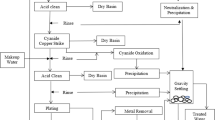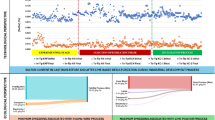Abstract
The use of inhibitor has been considered as one of the best method in reducing metal corrosion in offshore structure, oil and gas pipelines. Egg shell powder was investigated as a sustainable inhibitor for stainless steel corrosion in chloride medium using corrosion experiments. Response surface method (RSM) was used in obtaining the optimum operating conditions, interactive and main effect of the parameters inhibiting the stainless steel corrosion. R2 (Coefficient of determination) and ANOVA (analysis of variance) proved the RSM method appropriate for optimization of waste product inhibition on stainless steel. The predicted and experimental values from the model are in good agreement. The main effects of temperature and exposure time were found significant in inhibiting Type 316 stainless steel corrosion in sodium chloride medium whereas the effect of inhibitor concentration was less significant. The optimal inhibitor concentration, temperature and exposure time were found to be 5.63 g, 17.71 °C and 96.66 h, respectively. SEM/EDX analysis shows that egg shell was present on the stainless steel surface after weight loss test. This implied that stainless steel corrosion rate reduction could be as a result of egg shell powder present on the steel surface thereby forming a protective layer. This study suggests that the egg shell powder regarded as waste is a promising green alternative corrosion inhibitor.














Similar content being viewed by others
References
Alonso C, Andrade C, Castellote M, Castro P (2000) Chloride threshold values to depassivate reinforcing bars embedded in a standardized OPC mortar. Cem Concr Res 30:1047–1055
Monticelli C, Frignani A, Trabanelli G (2002) Corrosion inhibition of steel in chloride-containing alkaline solutions. J Appl Electrochem 32:527–535
Etteyeb N, Dhouibi L, Takenouti H, Alonso M, Triki E (2007) Corrosion inhibition of carbon steel in alkaline chloride media by Na3PO4. Electrochim Acta 52:7506–7512
Ahamad I, Prasad R, Quraishi M (2010) Thermodynamic, electrochemical and quantum chemical investigation of some Schiff bases as corrosion inhibitors for mild steel in hydrochloric acid solutions. Corros Sci 52:933–942
Obot I, Obi-Egbedi N, Umoren S (2009) Antifungal drugs as corrosion inhibitors for aluminium in 0.1 M HCl. Corros Sci 51:1868–1875
Popova A, Christov M (2006) Evaluation of impedance measurements on mild steel corrosion in acid media in the presence of heterocyclic compounds. Corros Sci 48:3208–3221
Li X, Deng S, Fu H, Mu G (2009) Inhibition effect of 6-benzylaminopurine on the corrosion of cold rolled steel in H2SO4 solution. Corros Sci 51:620–634
Obot I, Obi-Egbedi N (2010) Adsorption properties and inhibition of mild steel corrosion in sulphuric acid solution by ketoconazole: experimental and theoretical investigation. Corros Sci 52:198–204
Nataraja S, Venkatesha T, Tandon H (2012) Computational and experimental evaluation of the acid corrosion inhibition of steel by tacrine. Corros Sci 60:214–223
Jacobson KA, Boison D, Toti KS (2018) Methanocarba derivatives of pseudoribose that inhibit adenosine kinase. Google Patents
Kumar H, Karthikeyan S (2012) Inhibition of mild steel corrosion in hydrochloric acid solution by cloxacillin drug. J Mater Environ Sci 3:925–934
Lece HD, Emregül KC, Atakol O (2008) Difference in the inhibitive effect of some Schiff base compounds containing oxygen, nitrogen and sulfur donors. Corros Sci 50:1460–1468
Bouklah M, Benchat N, Hammouti B, Aouniti A, Kertit S (2006) Thermodynamic characterisation of steel corrosion and inhibitor adsorption of pyridazine compounds in 0.5 M H2SO4. Mater Lett 60:1901–1905
Asan A, Soylu S, Kıyak T, Yıldırım F, Öztaş S, Ancın N (2006) Investigation on some Schiff bases as corrosion inhibitors for mild steel. Corros Sci 48:3933–3944
Sanni O, Popoola API, Fayomi O (2018) The inhibitive study of egg shell powder on uns n08904 austenitic stainless steel corrosion in chloride solution. Defence Technol 14:463–468
Sanni O, Popoola API, Kolesnikov A (2018) Constitutive modeling for prediction of optimal process parameters in corrosion inhibition of austenitic stainless steel (Type 316)/acidic medium. Mater Res Express 5:106513
Sanni O, Popoola API, Fayomi O, Loto C (2018) A comparative study of inhibitive effect of waste product on stainless steel corrosion in sodium chloride/sulfuric acid environments. Metallogr Microstruct Anal 8:1–11
Sanni O, Popoola API, Fayomi O (2019) Electrochemical analysis of austenitic stainless steel (type 904) corrosion using egg shell powder in sulphuric acid solution. Energy Procedia 157:619–625
Sanni O, Popoola API (2019) Data on environmental sustainable corrosion inhibitor for stainless steel in aggressive environment. Data Brief 22:451–457
Sanni O, Popoola API, Fayomi O (2018) Enhanced corrosion resistance of stainless steel type 316 in sulphuric acid solution using eco-friendly waste product. Results Phys 9:225–230
Sanni O, Popoola API, Loto C (2013) Inhibitive tendency of zinc gluconate for aluminium alloy in sulphuric acid solution. Polish J Chem Technol 15:60–64
Sanni O, Popoola A, Fayomi O, Fatoba O (2017) Silicone oil as corrosion inhibitor for aluminium alloy in saline medium. Int J Microstruct Mater Prop 12:116–125
Montgomery DC (2017) Design and analysis of experiments. Wiley, Hoboken
Box G, Hunter WC, Stuart JC (1978) Statistics for experimenters. an introduction to design, data analysis, and model building. Wiley, New York
Acknowledgements
This work is based on research supported by National Research Foundation of South Africa and Tshwane University of Technology.
Author information
Authors and Affiliations
Corresponding author
Additional information
Publisher's Note
Springer Nature remains neutral with regard to jurisdictional claims in published maps and institutional affiliations.
Rights and permissions
About this article
Cite this article
Sanni, O., Popoola, A.P.I. Assessment of Concentration, Temperature and Exposure Time Effect on Waste Product as a Sustainable Inhibitor for Stainless Steel Corrosion: Optimization Using Response Surface Method. J Bio Tribo Corros 5, 46 (2019). https://doi.org/10.1007/s40735-019-0239-3
Received:
Accepted:
Published:
DOI: https://doi.org/10.1007/s40735-019-0239-3




